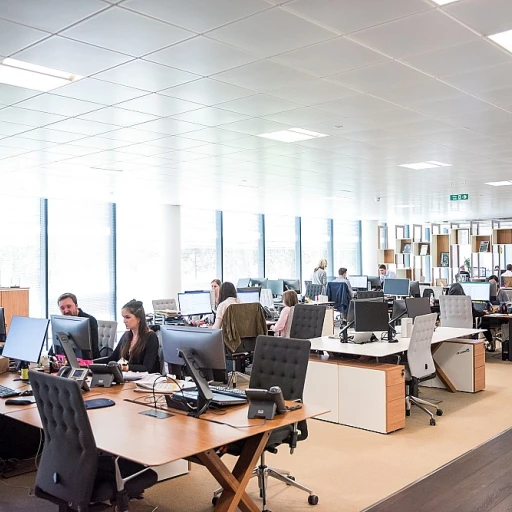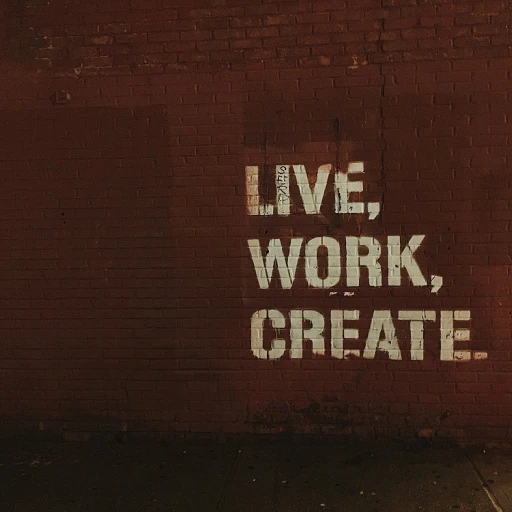
Understanding the Root Causes of Work Dread
Recognizing the Underlying Reasons Behind Work Anxiety
The feeling of dread before going to work can be daunting, impacting both personal satisfaction and professional productivity. One significant step in addressing this negative sentiment is to understand its underlying root causes. Often, factors such as a toxic work environment, overwhelming workloads, or the monotonous nature of daily tasks contribute to this stress. Additionally, it is crucial to consider the role of anxious thoughts and expectations that individuals impose on themselves.
Many people find themselves feeling stuck in their current job, unsure of how to navigate through the discomfort. This feeling of entrapment could stem from years of professional inertia or an imbalance in work and personal life. The dreaded "Sunday scaries," where anxiety creeps in as the work week approaches, frequently highlight this imbalance.
Moreover, the high-pressure expectations of skill-based performance can lead to anxiety over long-term success. Employees who dread the work day often report feeling worn down by the stress and unable to find joy in their professional roles. It's important to identify these sources of dread and address them to maintain mental health and enhance job satisfaction.
Recognizing these causes is the first proactive step towards overcoming the dread associated with work. For further insights into managing this anxiety and moving towards a rewarding work life, exploring the challenges of work-life balance might be beneficial.
The Impact of Work Dread on Mental Health
The Toll on Mental Well-being
Navigating through a work day filled with dread going not only impacts your efficiency but also takes a significant toll on your mental health. When you consistently feel stuck in a job you hate, it leads to increased stress and anxiety, often manifesting as the all too familiar 'Sunday scaries'. This constant source of dread can infiltrate every aspect of your life, making it difficult to maintain a healthy work life balance. The effects are not just psychological; they can escalate to physical symptoms as well. Employees who report high levels of work dread often experience headaches, fatigue, and sleep disturbances. Over time, this state of unrest can contribute to more severe mental health issues. Despite the unsettling nature of work dread, it's crucial to remember that you’re not alone in this. Many have faced similar anxious thoughts about going to work. By acknowledging the impact work dread has on your mental health, you take an important step toward addressing and improving your life. For more insights into innovative methods to enhance your well-being, consider exploring some comprehensive approaches to better work-life balance. Understanding and recognizing these challenges early on can pave the way toward a healthier mindset and a more positive daily work environment.Balancing Work and Personal Life
Striking a Harmony Between Professional and Personal Realms
Striving for a balance between work and personal life sometimes feels like an endless challenge, particularly for employees battling with job dread. The desire to do well and succeed professionally can often clash with personal commitments and desire for self-care. However, establishing a harmonious work-life balance is crucial in mitigating stress and improving mental health. Feeling overwhelmed by anxious thoughts is often a significant component leading to dreading a work day. Long hours, constant pressure, and unattainable expectations contribute to anxiety and the notorious "Sunday scaries." This stress accumulates over time, making it difficult to separate work life from home. To combat this, it's essential to find time for yourself amidst your professional and daily obligations. Start by identifying the activities that bring joy and relaxation outside work. Whether it's engaging in a hobby, spending time with family, or simply unwinding with a good book, these moments help recharge and refresh your mental state. Employers have a role to play too. Creating a flexible work environment where employees can balance their responsibilities with personal life commitments is beneficial for both parties. Companies can encourage taking regular breaks, offering mental health days, and recognizing the need for life balance—these things significantly reduce work-related dread and promote a positive work environment. Furthermore, enhancing work life balance with programs like corporate exercise initiatives can provide the skills and support employees need to manage stress effectively. Through collective participation in such programs, employees can foster a supportive community and gain long-term health benefits. While it's easy to feel stuck in the grind, remember that small, conscious changes in your routine can accumulate to alleviate the feeling of dread. Setting boundaries and prioritizing self-care are not just buzzwords but practical strategies that ensure your job does not overshadow your personal life.Creating a Positive Work Environment
Creating an Inviting Workspace
A crucial element in overcoming work dread is cultivating a positive work environment. When employees find themselves constantly dreading going to work, it may be due to an uninviting or stressful workspace. Tackling this involves making changes that can help foster a more inviting atmosphere, which subsequently has a positive impact on both mental health and life balance. Creating an inviting workspace is not just about aesthetics; it's about designing an environment that reduces anxiety and enhances productivity. Personalizing your workspace can make a significant difference. Simple things like having a clean desk, surrounding yourself with inspiring quotes, or bringing in some greenery can drastically shift your mood during the workday. Another element of a positive work environment is good communication. When feeling anxious about going to work, open communication with managers and colleagues can help clear misunderstandings and reduce the dread. It's crucial to have a culture where employees feel comfortable expressing concerns without fear of judgment. This transparency leads to more innovative solutions and an overall more uplifting work atmosphere.Implementing Routine and Flexibility
Establishing a routine while allowing for some level of flexibility can also help in minimizing work dread. Having a consistent schedule gives employees a sense of control over their day, which can alleviate anxious thoughts about the unknown. However, it’s also important to have flexibility to adapt to unforeseen changes that may arise during the workday. Encouraging breaks and setting boundaries between work and personal time can also alleviate the stress and dread associated with work. This balance helps in preserving mental health and significantly contributes to long-term well-being. Ultimately, transforming your work environment into a space that promotes positivity and productivity can significantly reduce the feeling of dread that clouds the daily routine. Focusing on these changes is a proactive step towards a healthier, more balanced work life.Practical Tips for Reducing Work Dread
Taking Steps to Minimize Anxiety at Work
Feeling anxious and dreading going to work is a common issue faced by many. It's essential to address these feelings to foster a better mental health state. By identifying the source of your dread, be it an overwhelming workload, lack of interest in your current job, or an unhealthy work environment, you can begin to manage your stress effectively.
Start implementing small changes in your daily routine :
- Break Tasks into Smaller Steps: Large tasks at work can often lead to feelings of dread. By breaking them down into smaller, manageable steps, you can alleviate some anxiety and feel a sense of achievement throughout your day.
- Set Realistic Goals: Don't set yourself up for failure by aiming for goals that are too ambitious. Set achievable targets that align with your skills and current workload to reduce stress and dread.
- Establish Boundaries: In the pursuit of maintaining life balance, it's crucial to set boundaries between work and personal life. Avoid taking work home or answering emails during your off time.
- Practice Mindfulness: Regular mindfulness practices, such as meditation or deep-breathing exercises, can help you manage anxious thoughts and improve your mental health.
- Communicate: Don't hesitate to discuss your feelings with a manager or HR personnel. Constructive feedback can often lead to positive changes in the work environment.
Remember, it's important to monitor your mental health consistently. If the dread persists, seeking help from a mental health professional can provide you with strategies to cope effectively.
Seeking Professional Help and Support
When to Seek Professional Assistance
Understanding the roots of work-related dread can sometimes be overwhelming, and there may come a time when seeking professional help is necessary. When anxious thoughts about your job start to negatively affect your mental health, it may be beneficial to consult with a mental health professional.
Indicators that you might benefit from professional guidance include:
- Persistent anxiety or dread when thinking about going to work
- Feelings of being stuck in your current job with no way out
- Frequent Sunday scaries, where the approach of a new work day causes distress
- Severe stress impacting your personal life balance
- You find yourself reporting a pattern of negative feelings toward work daily
A therapist can help you explore these feelings and work on skills-based strategies to manage them. Therapy sessions can provide a safe space to discuss your dread and formulate a plan to reduce it. Moreover, some workplaces offer resources for employees, such as Employee Assistance Programs (EAPs), which can help you find the right support and create a healthier work environment.
In addition to therapy, other professionals like career coaches or counselors can assist in developing a path forward if you hate your current job or feel stuck. They can offer career assessments, job stress management techniques, and other helpful tools to improve your work life balance.
Long-term solutions might involve discussing adjustments in your workplace or exploring different roles that align with your interests and reduce your work dread. Remember, seeking help is a proactive step towards better mental health and life quality, especially if you find yourself dreading going to work every day.












